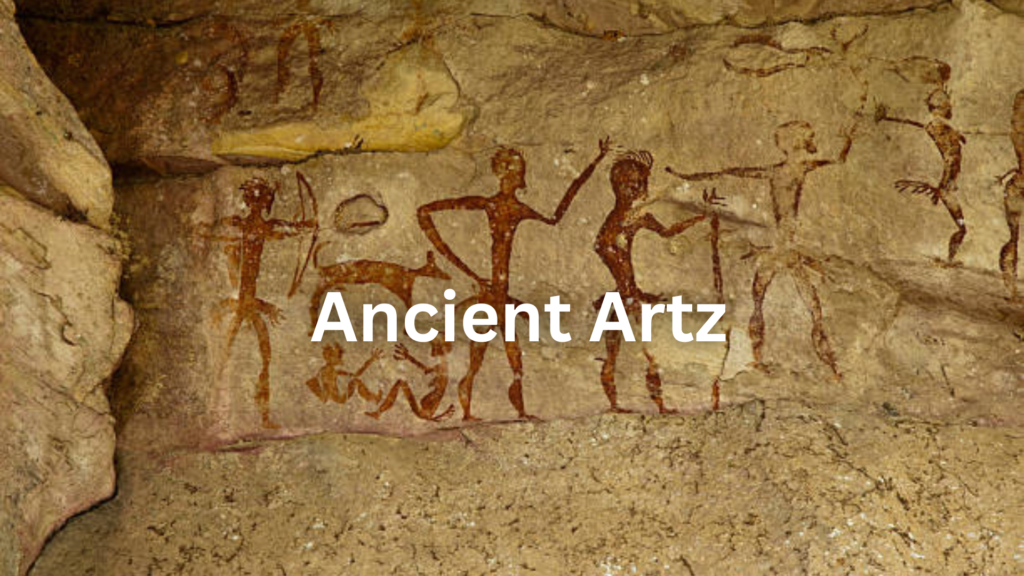Ancient artz is a testament to humanity’s enduring creativity, innovation, and cultural expression. From the monumental structures of ancient Egypt to the intricate pottery of Mesopotamia, these artistic endeavours reflect the values and beliefs of their creators and provide us with invaluable insights into the past. This article delves into the world of ancient artz, exploring its characteristics, significance, and the diverse forms it has taken across civilizations.
What Defines Ancient Artz?
Ancient artz refers to the artistic creations of early civilizations, often spanning prehistoric times to the fall of the Western Roman Empire in 476 AD. However, its scope can extend to non-Western cultures and prehistoric art, offering a vast canvas of human ingenuity.
Key Characteristics of Ancient Artz
1. Religious and Symbolic Significance
Many works of ancient artz were deeply rooted in religious and mythological contexts. Artists aimed to convey spiritual narratives and appease deities through sculptures, paintings, or architectural marvels. For instance, Egyptian tomb paintings often depicted scenes of the afterlife, serving both as a guide and a tribute to the gods.
2. Use of Natural Materials
Artists of ancient times utilized resources readily available in their environments. Stone, clay, wood, metals, and natural pigments were commonly used. The materials chosen often determined the durability and aesthetic of the final creation.
3. Emphasis on Durability
Durability was a hallmark of ancient artz, particularly in architecture and sculpture. Structures like the Pyramids of Giza and the Parthenon were designed to endure for generations, reflecting a desire to preserve cultural and religious legacies.
4. Cultural and Stylistic Diversity
Each civilization brought its unique perspective to ancient artz. From the idealized human forms of Greek sculpture to the symbolic hieroglyphs of Egypt, these variations underscore the rich tapestry of human expression.

Iconic Examples of Ancient Artz
1. Ancient Egypt
- Monumental Architecture: The Pyramids of Giza remain one of the most iconic examples of ancient artz, symbolizing the power and divinity of the pharaohs.
- Hieroglyphic Writing: Art and writing intertwined to document history and convey religious beliefs.
- Sculptures and Tomb Paintings: These works often depicted gods, royalty, and scenes of daily life, emphasizing both realism and symbolism.
2. Ancient Greece
- Sculpture: Renowned for its idealized human forms, Greek sculpture celebrated beauty, proportion, and movement.
- Pottery: The black-figure and red-figure styles depict mythological tales and daily activities.
- Architecture: Temples such as the Parthenon exemplify the precision and grandeur of Greek design.
3. Mesopotamia
- Ziggurats: Towering temple structures that symbolized a connection between heaven and earth.
- Cuneiform Tablets: An early form of writing that combined art and communication.
- Relief Sculptures: Intricately carved stone panels depicting mythological and historical narratives.
4. Prehistoric Art
- Cave Paintings: Found in places like Lascaux and Altamira, these works often depicted animals and hunting scenes, serving both symbolic and practical purposes.
- Megalithic Structures: Stonehenge is a prime example of prehistoric architectural ingenuity.
- Portable Art: Small figurines like the Venus of Willendorf showcase early human creativity.
Why Ancient Artz Matters
The study of ancient artz provides a window into early civilisations’civilizations’ cultural, spiritual, and social lives. It helps us:
- Understand Historical Context: By examining ancient artworks, we gain insights into the values, beliefs, and daily lives of past societies.
- Appreciate Human Innovation: The ingenuity and skill required to create many ancient masterpieces remain awe-inspiring.
- Preserve Cultural Heritage: Ancient artz serves as a bridge connecting us to our ancestors, reminding us of our shared human journey.
The Eco-Friendly Legacy of Ancient Artz
Interestingly, ancient artz often employed eco-friendly practices long before the term existed. Artists relied on natural materials and sustainable methods, showcasing a harmonious relationship with their environment. From pigments derived from plants and minerals to architectural designs that leveraged natural light and ventilation, their techniques offer lessons in sustainability.
Read Also : Is myfastbroker.com forex brokers Legitimate?.

Conclusion
Ancient artz is more than just a relic of the past; it is a vibrant testament to humanity’s creativity and resilience. By exploring its diverse forms and cultural contexts, we can deepen our understanding of the human spirit and its capacity for expression. Let the timeless beauty of ancient artz inspire us to create, innovate, and preserve our heritage for futur



























Your point of view caught my eye and was very interesting. Thanks. I have a question for you.